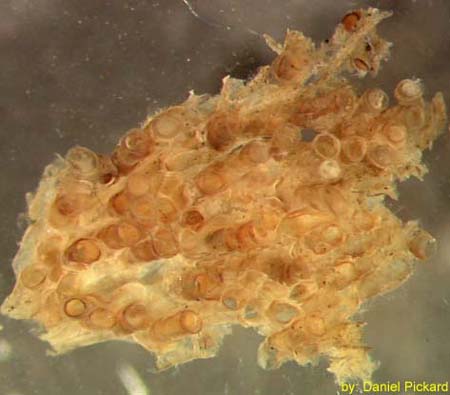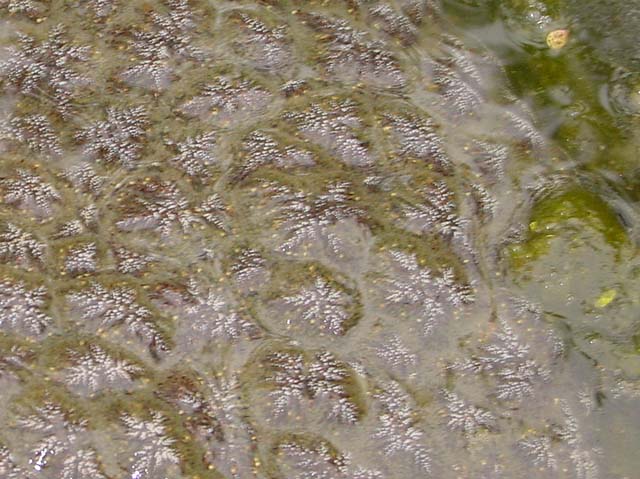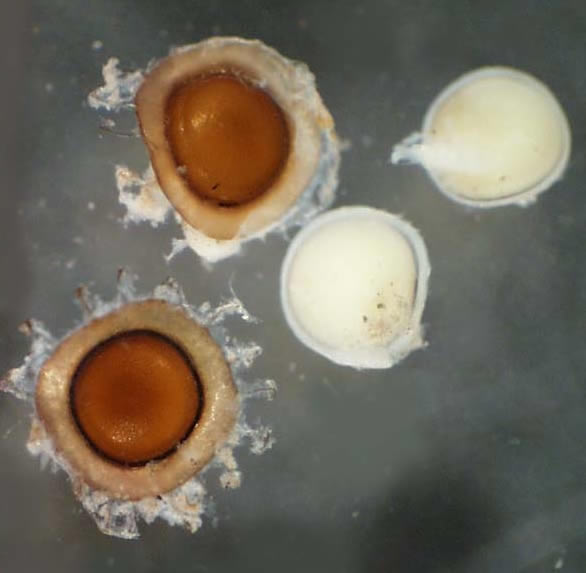
THE XERCES SOCIETY FOR INVERTEBRATE CONSERVATION Aquatic Invertebrates in Pacific Northwest Freshwater Wetlands |
| Identify taxa |
Ectoprocta (Bryozoa, moss animals) |
Ectoprocta are also known as Bryozoa. The most widely used common name is moss animals, but there are also regional names for these gelatinous blobs that people periodically see floating in slow and still waters. Ectoprocta can clog water intakes, requiring 24 hour attention at times. There are thousands of species of ocean dwelling moss animals, but only about two dozen species are known from freshwater environments in North America. Ectoprocta are tiny filter-feeding animals that can form large colonies, much like coral. These colonies may form a crust on the dimly lit undersides of logs or rocks in wetlands, ponds, slow streams, and shallow areas of lakes. Most species dwell in still or slow moving waters. The crusts can look similar to moss or mats of algae, and unless more closely inspected, are often confused for such plants. They rarely live on sand or gravel. In preserved samples of Ectoprocta, you're likely to see the sturdy statoblasts, which will look similar to small seeds. The statoblasts are an adaptation for surviving harsh environmental conditions and dispersal. The live individuals are similar to corals or hydra, in that they have up to dozens of delicate tentacles that they use to capture fine, drifting organic material. They can retract their tentacles into the protective, non-living body of the colony when disturbed. The most conspicuous and common genus within the Ectoprocta is the Pectinatella. Pectinatella forms large gelatinous blobs in warm (>16°C or 60°F) slow or still water. The gelatinous blob (sometimes as big as a basketball) is mostly water, but has tiny rosettes of individual bryozoans covering the surface. The smaller blobs may be free floating, but larger ones usually develop on branches and vegetation. |
Size: xsmall (threadlike wisp) to xlarge (massive blob)
|
 |
|
© 2007 Xerces Society
Contact info@xerces.org



